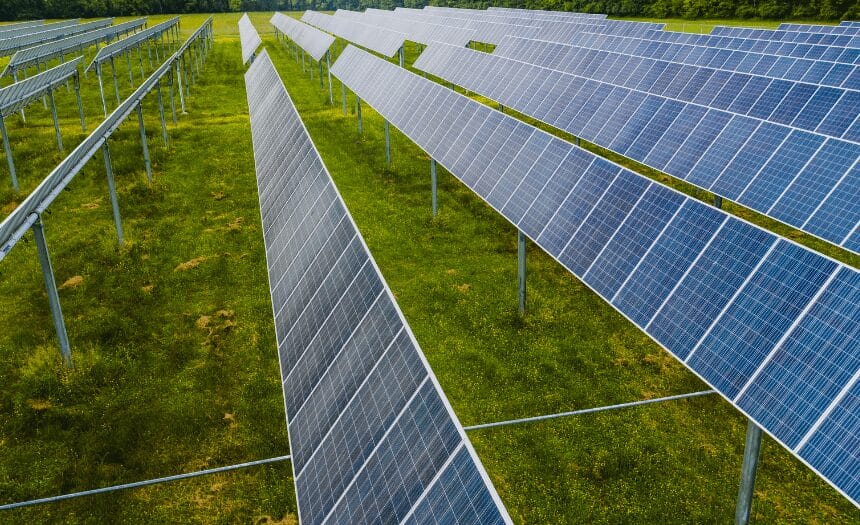
The unprecedented pace of solar growth is challenging and reforming America’s construction and engineering capacity. McKinsey projects that wind and solar will attract $700 to $800 billion in capital investments by 2030.
The solar market is a dynamic landscape shaped by innovations, varying technologies, and the expanding role of Engineering, Procurement, and Construction (EPC) companies. In this article, we’ll dissect the solar market, from the offerings of solar companies and the comprehensive services EPCs provide to the intricate role of solar trackers.
The solar market exists to harness thermal power from the sun’s rays, thereby reducing dependence on fossil fuels. Now valued at $234.86 billion globally, solar energy is growing much faster than anticipated, driven by the increasing demand for green energy in countries worldwide.
Did you know many of Kloeckner Metals’ nationwide branches boast special processing capabilities for the solar industry? Download our solar brochure now to see how Kloeckner Metals can service your solar needs.
Playing a pivotal role in the solar market, solar companies are involved in the engineering, testing, and, in some cases, manufacturing of solar panels and other components. Depending on the company, they may offer a spectrum of solutions, including solar trackers and EPC services.
Solar trackers are devices designed to orient solar panels or mirrors toward the sun to maximize the absorption of sunlight throughout the day. Their primary purpose is to increase the efficiency of solar energy capture by ensuring that the solar modules are always aligned with the sun’s rays.
There are two main types of solar trackers: single-axis and dual-axis. Single-axis trackers can be horizontal or vertical. Horizontal trackers move the solar panels from east to west. Vertical trackers adjust the tilt of the solar panels from north to south. Dual-axis trackers can move horizontally and vertically, allowing for more precise alignment with the sun throughout the day and across all seasons.
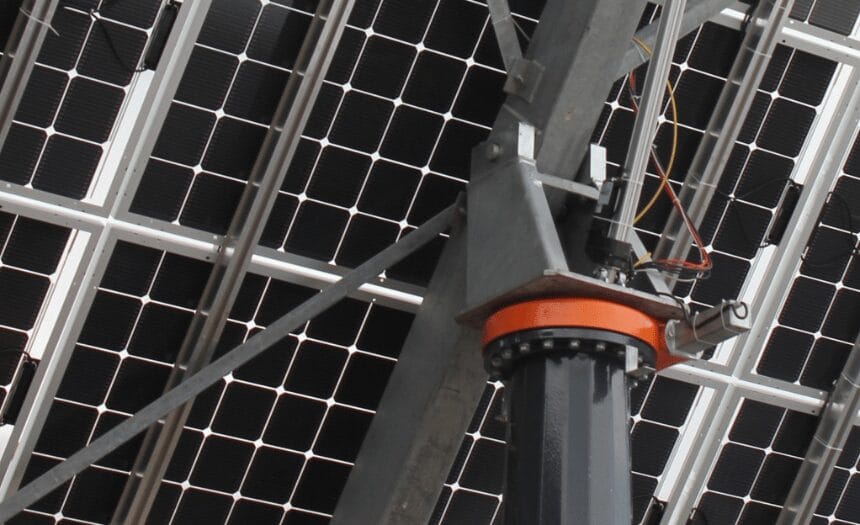
Solar trackers have sensors and control systems that constantly monitor the sun’s position. Based on this information, the tracker adjusts the orientation of the solar panels or mirrors. This dynamic positioning significantly increases the solar installation’s sunlight, leading to a higher energy output than fixed installations.
While solar trackers offer increased energy production efficiency, they come with higher upfront costs and more complex engineering. Factors such as wind load and the need for a more substantial support structure can also influence their applicability in specific locations and projects. Despite these challenges, solar trackers are widely used in utility-scale solar power plants where optimizing energy output is crucial for economic viability.
Solar trackers, engineered to follow the sun’s position in the sky, dominate the market with an 80% share. Despite their higher upfront cost and dependence on heavy tubing and piling, solar trackers are known for their efficiency. Wind factors and the substantial weight of 70 tons per megawatt make land considerations crucial.
Fixed-tilt systems, also known as fixed-tilt arrays or fixed-tilt solar panels, are solar installations where the solar panels are set at a fixed angle. Unlike solar trackers, these systems do not move or adjust their position throughout the day to follow the sun’s path.
The tilt angle is typically set during the installation based on factors such as the geographical location, time of year, and the desired energy output. This fixed positioning simplifies the system design and reduces maintenance requirements but comes at the expense of not continuously aligning with the sun.

Constituting 15% of the current market, fixed tilt trackers offer a stationary and less expensive alternative. While easier to install with less complex engineering, they catch less sunlight. With a concentrated standing structure, these trackers weigh 65 tons per megawatt, averaging 40 tons for purlins, frames, and support and 25 tons for piling. The solar industry relies heavily on steel products and metal processing techniques to ensure solar installations’ efficiency, durability, and versatility.
Carports have emerged as an efficient solution for integrating solar into congested spaces. Though not yet prevalent, they present an innovative approach to maximizing solar energy use in areas with limited available land.
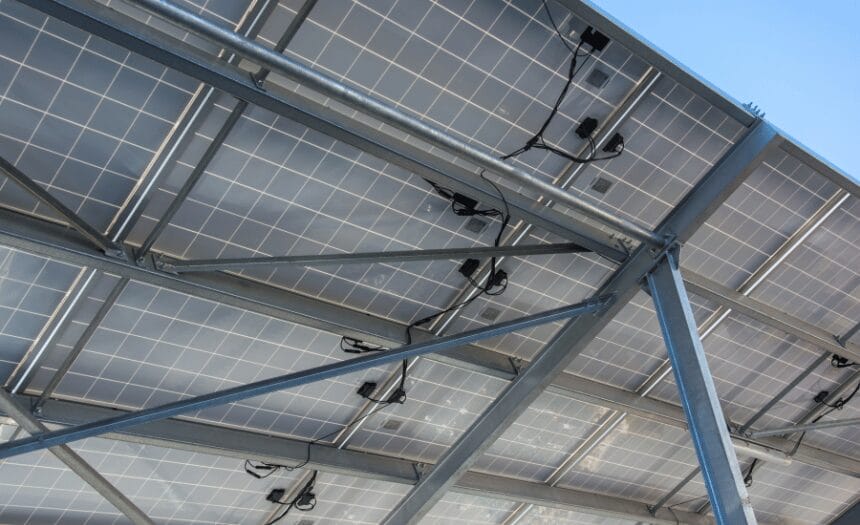
In congested urban or commercial spaces where ground space is at a premium, carports offer an innovative way to use the available area efficiently. By installing solar panels on top of carports, which would otherwise be unused space, the integration provides an additional source of clean energy without compromising existing infrastructure.
Carports with integrated solar panels contribute to sustainability goals by reducing the environmental impact of traditional energy sources. They enable businesses and urban developments to generate clean energy without additional land, helping to minimize the carbon footprint associated with electricity consumption.
Solar trackers, despite their dominance, present unique challenges and market dynamics:
Solar trackers involve intricate engineering due to their dynamic nature, necessitating precise movement to capture optimal sunlight. The lack of standardized industry practices adds complexity, making each tracker system unique.
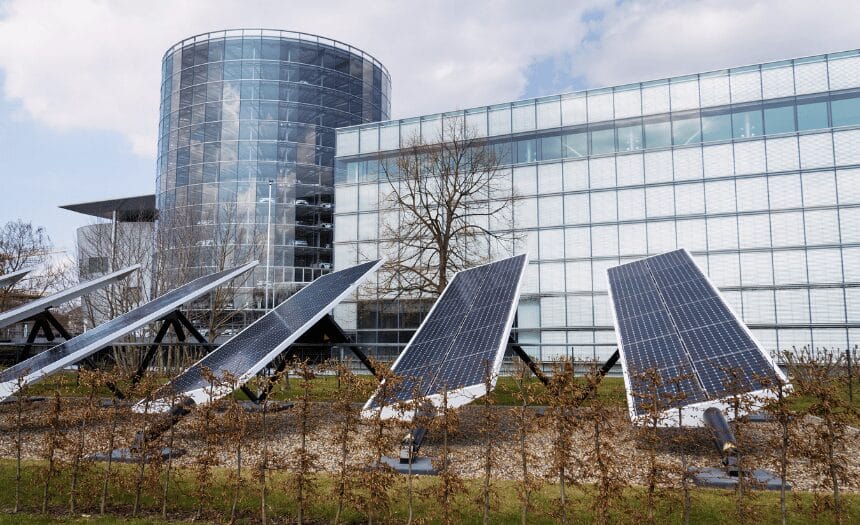
The engineering of solar trackers involves a combination of mechanical, electrical, and control system design to ensure precise and efficient tracking of the sun’s movement.
Here’s an overview of the critical engineering aspects involved in the design and operation of solar trackers:
Solar trackers require a robust frame and structure to support the weight of solar panels and withstand adverse environmental factors. Materials such as steel or aluminum are commonly used for their durability. Here is our guide to metals for solar suppliers.
High-quality bearings and drives are essential for smooth and precise movement. Dual-axis trackers, in particular, require more complex mechanical components to enable motion in both horizontal and vertical directions. In addition, the sun tracking mechanism, which involves motors, gears, and sensors, must be designed to accurately move the solar panels in response to the sun’s position.
Solar trackers require a reliable power supply to operate the tracking mechanism. This can be achieved through solar panels, batteries, or a connection to the grid. Proper wiring and connections are critical to ensure the seamless operation of electrical components. Weather-resistant and durable materials are typically used for outdoor installations.
Advanced algorithms are employed to calculate and predict the sun’s position based on geographical location, date, and time. These algorithms ensure accurate tracking and minimize errors.
Some solar trackers incorporate optimization algorithms that consider factors like energy production efficiency, weather conditions, and system limitations to maximize overall performance.
Solar trackers may be equipped with wind sensors to mitigate the impact of strong winds. In adverse weather conditions, the trackers can move to a safe position. Solar trackers are also often designed with safety features in case of malfunctions or emergencies, including emergency shutdown systems to prevent damage.
Given that solar trackers are usually installed in outdoor environments, materials with high corrosion resistance are chosen to ensure the system’s longevity. Sealing and weatherproofing protect electrical and mechanical elements from environmental elements like rain, snow, and dust.
The engineering of solar trackers is a multidisciplinary effort, requiring expertise in mechanical design, electrical engineering, control systems, and software development. The goal is to create a reliable and efficient system that optimally captures solar energy throughout the day.
While solar trackers offer superior efficiency, their higher upfront cost can deter some solar projects. Balancing the initial investment with long-term gains becomes critical for decision-makers in the solar industry.
The cost considerations of solar trackers involve various factors, including the initial installation costs, ongoing operational and maintenance expenses, and potential benefits such as increased energy production.
Consider these vital aspects when evaluating the costs associated with solar trackers:
The cost considerations for solar trackers involve a comprehensive analysis of upfront expenses, ongoing operational costs, energy production benefits, and financial incentives. Conducting a thorough economic analysis to determine the feasibility and financial attractiveness of implementing solar trackers for a specific project is essential.
Heavy tubing and piling reliance make solar trackers highly dependent on suitable land. Factors like wind conditions and land availability become crucial considerations during the planning phase of solar projects.
The correlation between land dependency and solar trackers is primarily associated with physical requirements and design considerations of solar tracking systems.
Solar trackers typically require more land than fixed-tilt systems because trackers need additional space for the dynamic movement of the panels as they track the sun’s position throughout the day.
The land dependency of solar trackers arises from the need for sufficient space to accommodate the tracking system’s range of motion. This dependence is a critical consideration when evaluating potential installation sites.
The topography and soil conditions of the land play a role in determining the feasibility of installing solar trackers. Uneven or challenging terrains may require more extensive foundation work and engineering solutions, affecting land dependency.
Soil stability and load-bearing capacity factors influence the foundation design for solar trackers. Complex terrains may necessitate customized foundation solutions, contributing to land dependency.
Fixed-tilt systems can be installed on a broader range of land types, including uneven terrain. In contrast, solar trackers require a more level and open area to operate optimally. This can lead to a higher degree of land dependency for tracker installations.
Solar trackers need space for their full tracking range, especially in dual-axis systems. The available land must allow for the east-west and, in the case of dual-axis trackers, north-south movement of the panels.
The choice between fixed-tilt systems and solar trackers may be influenced by the environmental impact on local ecosystems. Solar tracker installations require a careful assessment of ecological considerations and adherence to regulatory requirements, influencing land dependency.
Land dependency becomes more pronounced as solar tracker projects scale up. Large-scale solar farms using trackers need extensive land areas to accommodate the tracking systems for all installed panels.
While solar trackers have a higher land dependency, larger projects may benefit from economies of scale, potentially making the land requirement more efficient regarding energy output per unit of land.
Land dependency becomes critical in urban and commercial settings with limited space. Fixed-tilt systems or other solar solutions might be preferred due to space constraints, despite potentially lower energy yield.
The correlation between land dependency and solar trackers revolves around sufficient land to accommodate the tracking systems. The choice between solar trackers and fixed-tilt systems often involves a trade-off between increased energy production and the land area required, with the latter influencing a solar installation’s overall feasibility and cost-effectiveness.
Engineering, Procurement, and Construction (EPC) companies are central players in the solar market. Their role extends beyond that of solar companies, encompassing end-to-end solar energy services.
EPCs take on exponentially more significant portions of solar field projects. Their purview extends far beyond installing solar panels, encompassing a spectrum of tasks that form the backbone of solar field development.
EPCs are pivotal in preparing the ground for solar fields. This involves intricate engineering to ensure a stable foundation for solar panels, including installing piling systems that securely anchor the solar infrastructure to the ground.
As the demand for renewable energy grows, EPCs are at the forefront of developing effective power storage solutions. This includes implementing cutting-edge technologies such as energy storage systems (ESS) to store excess energy generated during peak sunlight hours for use during periods of low sunlight.
EPCs are instrumental in managing transmission stations and overseeing power distribution networks. This involves connecting solar fields to the grid and ensuring efficient and reliable distribution, including overhead transmission systems that transport energy over long distances.
Beyond energy, EPCs contribute to water delivery solutions for cities and communities. This multifaceted approach addresses the water-energy nexus, integrating sustainable water management practices with solar energy projects.
EPCs spearhead advanced power projects that transcend solar energy. Their expertise extends to diverse renewable energy sources, including wind, hydro, and gas. This comprehensive approach positions EPCs as critical players in transitioning to a sustainable energy landscape.
In the age of digital transformation, EPCs are involved in constructing data centers, which are pivotal in managing and processing the vast amounts of data generated by modern energy systems. This includes the construction of cooling tanks to ensure optimal performance of data center infrastructure.
EPCs extend their capabilities beyond the energy sector to contribute to civil work projects. This involves the construction of critical infrastructure such as bridges, roads, and public charging stations, showcasing the versatility of EPCs in addressing diverse societal needs.
In pursuing a sustainable future, EPCs play a role in developing distributed infrastructure. This includes establishing electric vehicle (EV) charging stations and hydrogen refueling stations, facilitating the transition to cleaner modes of transportation.
EPCs often work with solar companies, collaborating on the solar tracker component while overseeing crucial aspects like ground preparation, piling, and support infrastructure. This collaborative model allows EPCs to leverage their expertise across diverse domains.
This approach allows solar companies to concentrate on their core strengths while entrusting EPCs with broader engineering and construction aspects of solar projects. The seamless integration of efforts ensures that each element of the solar field project is executed with precision and efficiency.
EPCs, with their extensive experience and multidisciplinary teams, bring a wealth of knowledge. Their ability to navigate complex engineering challenges, coupled with a keen understanding of diverse domains, positions them as orchestrators capable of harmonizing the intricate components of solar energy projects.
As the solar market evolves, the synergy between solar companies, innovative tracker solutions, and EPCs reshapes the renewable energy landscape. As the global transition to sustainable energy gains momentum, EPCs are poised to play an increasingly pivotal role. Their responsibilities extend beyond installing solar panels to shaping the entire renewable energy landscape. From pioneering advanced power projects to contributing to developing critical infrastructure, EPCs are architects of a sustainable future.
From overcoming engineering challenges in solar trackers to the expansive role of EPCs in solar field projects, the industry continues to march towards a more sustainable and efficient future. With each advancement, solar energy becomes not just a source of power but a transformative force driving change across multiple sectors.
The collaboration between EPCs and solar companies represents a dynamic synergy that propels the solar industry forward. As these entities continue to innovate and collaborate, the solar landscape stands to benefit from their collective expertise, ensuring a brighter and more sustainable future powered by the sun.
Did you know many of Kloeckner Metals’ nationwide branches boast special processing capabilities for the solar industry? Download our solar brochure now to see how Kloeckner Metals can service your solar needs.
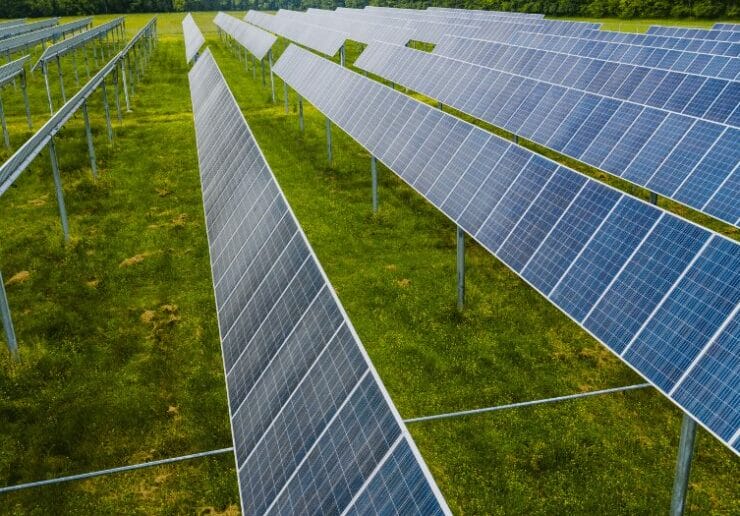
Steel base plates are fundamental elements employed in various manufacturing...
Metal fabrication is a critical process that transforms raw metal...
The solar industry has undergone a significant transformation by incorporating...

X
The Kloeckner Metals website uses modern technologies. Unfortunately, your browser doesn't support those technologies.
Download the latest version of one of these browsers to experience the site: